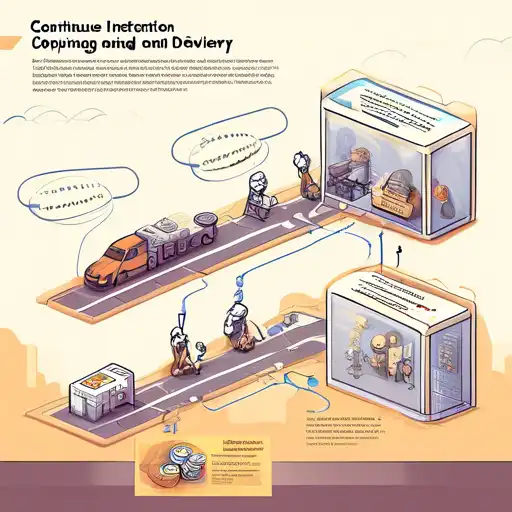What is Continuous Integration and Delivery?
Continuous Integration (CI) and Continuous Delivery (CD) are pivotal practices in the modern software development lifecycle, aimed at improving software quality and speeding up the release process. CI/CD automates the integration of code changes from multiple contributors into a single software project, ensuring that the codebase is always in a deployable state.
The Core Principles of CI/CD
At its heart, CI/CD is about automating the software release process. Continuous Integration focuses on integrating code changes frequently, where each integration is verified by an automated build and tests. Continuous Delivery extends CI by ensuring that the software can be released to production at any time, with the push of a button.
Benefits of Implementing CI/CD
- Faster Release Cycles: Automating the build and test process reduces manual errors and speeds up the release process.
- Improved Code Quality: Early detection of bugs and integration issues leads to higher quality software.
- Reduced Deployment Risk: Frequent code integrations and automated testing reduce the risk associated with deployments.
- Enhanced Team Productivity: Developers can focus on writing code without worrying about integration issues.
How to Implement CI/CD in Your Projects
Implementing CI/CD requires a cultural shift towards automation and continuous improvement. Start by setting up a version control system, automate the build and test processes, and ensure that your team commits code changes frequently. Tools like Jenkins, Travis CI, and GitLab CI can help automate these processes.
Challenges and Solutions in CI/CD
While CI/CD offers numerous benefits, teams may face challenges such as resistance to change, integration complexities, and maintaining test environments. Overcoming these challenges involves fostering a culture of collaboration, investing in the right tools, and continuously monitoring and improving your CI/CD pipeline.
Conclusion
Continuous Integration and Delivery are essential practices for any team looking to improve their software development process. By automating the integration and delivery processes, teams can achieve faster release cycles, higher quality software, and more efficient workflows. Embracing CI/CD is not just about adopting new tools but also about fostering a culture of continuous improvement and collaboration.
For more insights into DevOps practices, check out our articles on DevOps Best Practices and Automation in Software Development.
